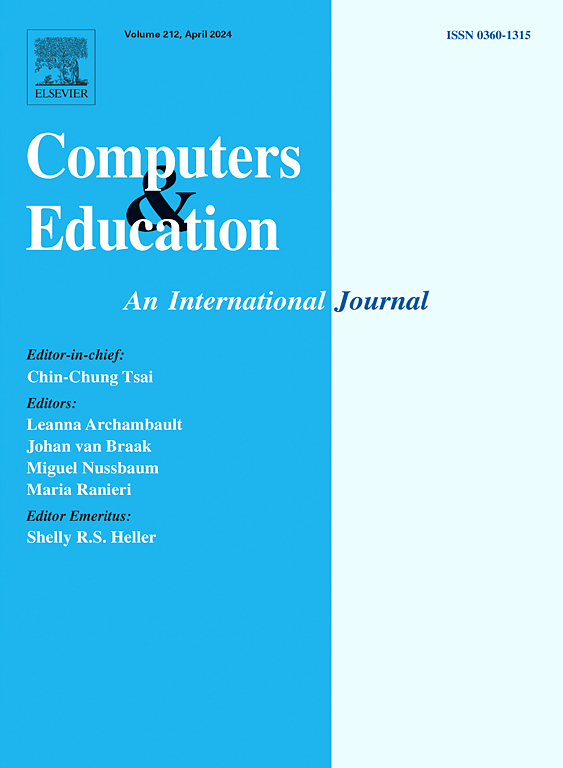Comparing cognitive load during video versus traditional classroom instruction based on heart rate variability measures
IF 10.5
1区 教育学
Q1 COMPUTER SCIENCE, INTERDISCIPLINARY APPLICATIONS
引用次数: 0
Abstract
This pilot study used heart rate variability (HRV) as an indicator of cognitive load to examine student engagement in the learning process. We investigated the dynamics of students' (N = 45, paired sample) cognitive load in classes with and without video tutorials and compared differences in cognitive load between development phases of lessons where students are acquiring new knowledge. The results of the study show that the average cognitive load of students is higher when using video tutorials than in classrooms without them. From the students' behavior, we can see that when using video tutorials, students frequently adjust their viewing strategies or take notes. In classrooms without videos, students are more easily distracted. This means that students mobilized more cognitive resources for effective learning while using video tutorials. In general, our results suggest that the use of video tutorials in the development phase of classroom can increase student effectiveness in learning new knowledge. This study provides new insights into the application of video tutorials as a form of computer-assisted instruction, highlighting the potential benefits of using dynamic cognitive load monitoring in real classroom environments.
基于心率变异性测量比较视频和传统课堂教学中的认知负荷
这项初步研究使用心率变异性(HRV)作为认知负荷的指标来检查学生在学习过程中的参与度。我们调查了学生(N = 45,配对样本)在有和没有视频教程的课堂上的认知负荷动态,并比较了学生在学习新知识的课程发展阶段之间的认知负荷差异。研究结果表明,使用视频教程的学生的平均认知负荷高于没有视频教程的教室。从学生的行为可以看出,在使用视频教程时,学生经常调整观看策略或做笔记。在没有视频的教室里,学生更容易分心。这意味着学生在使用视频教程时调动了更多的认知资源来进行有效的学习。总的来说,我们的研究结果表明,在课堂开发阶段使用视频教程可以提高学生学习新知识的有效性。本研究为视频教程作为一种计算机辅助教学形式的应用提供了新的见解,强调了在真实课堂环境中使用动态认知负荷监测的潜在好处。
本文章由计算机程序翻译,如有差异,请以英文原文为准。
求助全文
约1分钟内获得全文
求助全文
来源期刊

Computers & Education
工程技术-计算机:跨学科应用
CiteScore
27.10
自引率
5.80%
发文量
204
审稿时长
42 days
期刊介绍:
Computers & Education seeks to advance understanding of how digital technology can improve education by publishing high-quality research that expands both theory and practice. The journal welcomes research papers exploring the pedagogical applications of digital technology, with a focus broad enough to appeal to the wider education community.
 求助内容:
求助内容: 应助结果提醒方式:
应助结果提醒方式:


